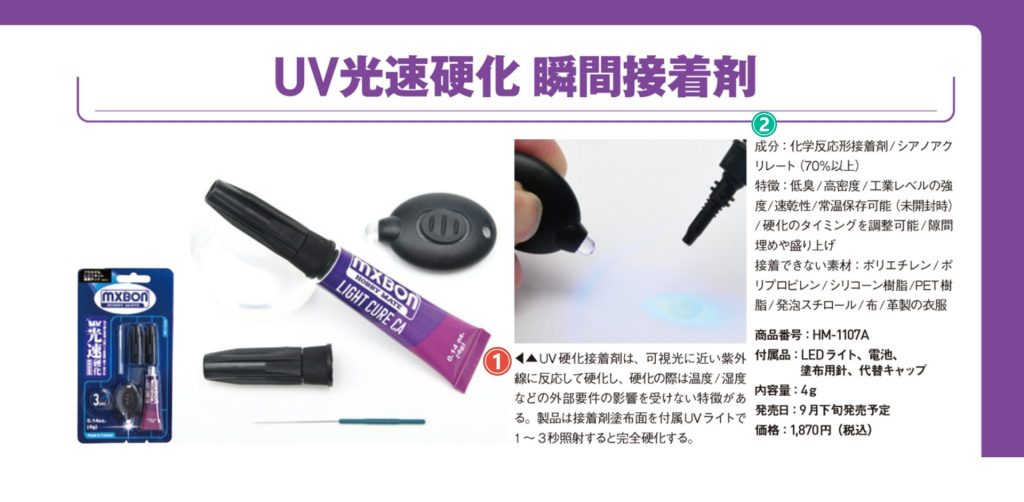
1. UV cyanoacrylate adhesive reacts to ultraviolet light close to the visible spectrum and cures without being affected by external factors such as temperature or humidity. The product fully cures within 1-3 seconds when the adhesive-coated surface is exposed to the included UV light.
2. Ingredients: Chemical reaction adhesive / Cyanoacrylate (70% or more)
Features: Low odor /High density /Industrial-level strength/ Fast curing/ Room temperature storage (when unopened) /Adjustable curing timing/Suitable for gap filling and layering
Materials that cannot be bonded: Polyethylene / Polypropylene / Silicone resin / PET resin / Styrofoam / Fabric / Leather clothing

1. Check the UV light’s transparency
2. UV cyanoacrylate adhesives generally cannot bond materials that do not allow UV light to pass through. However, if UV light can be applied from the back and is visible from the front of a thin plastic sheet, bonding is possible. Exposure time should be about 3–5 seconds.

1. Check the cutting performance of different tools
2. This product can be used for gap filling and layering, so the cutting performance of cured material was compared using a cutter and a metal file. The cured material is very hard, making it difficult to trim with a cutter, which causes surface irregularities (photo left). A metal file allows smooth processing in one stroke (photo right). For shaping, a metal file or waterproof sandpaper is recommended.



1. The versatile UV cyanoacrylate adhesive from Taiwan
2. Speeds up curing with UV light!
3. Perfect viscosity for ease of use!
4. Can create transparent parts! Supports layering and filling!
5. Comes with an applicator (F) for precise application of the right amount!
6. Packaging can be cut into an instant tray for use!

The following excerpt is from Model Art Modeling Magazine, November 2024 issue, pages 73. This issue is available at bookstores and model shops throughout Japan, as well as through online mail-order sites. For more details, visit: Model Art Official Webshop
Discover how MXBON can elevate your modeling projects and join the revolution in adhesive innovation.
Stay tuned for Part 3, where we’ll continue our topic about MXBON Cyanoacrylate Adhesive.

